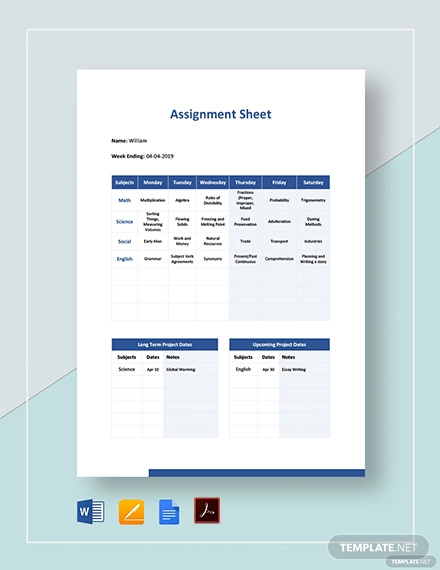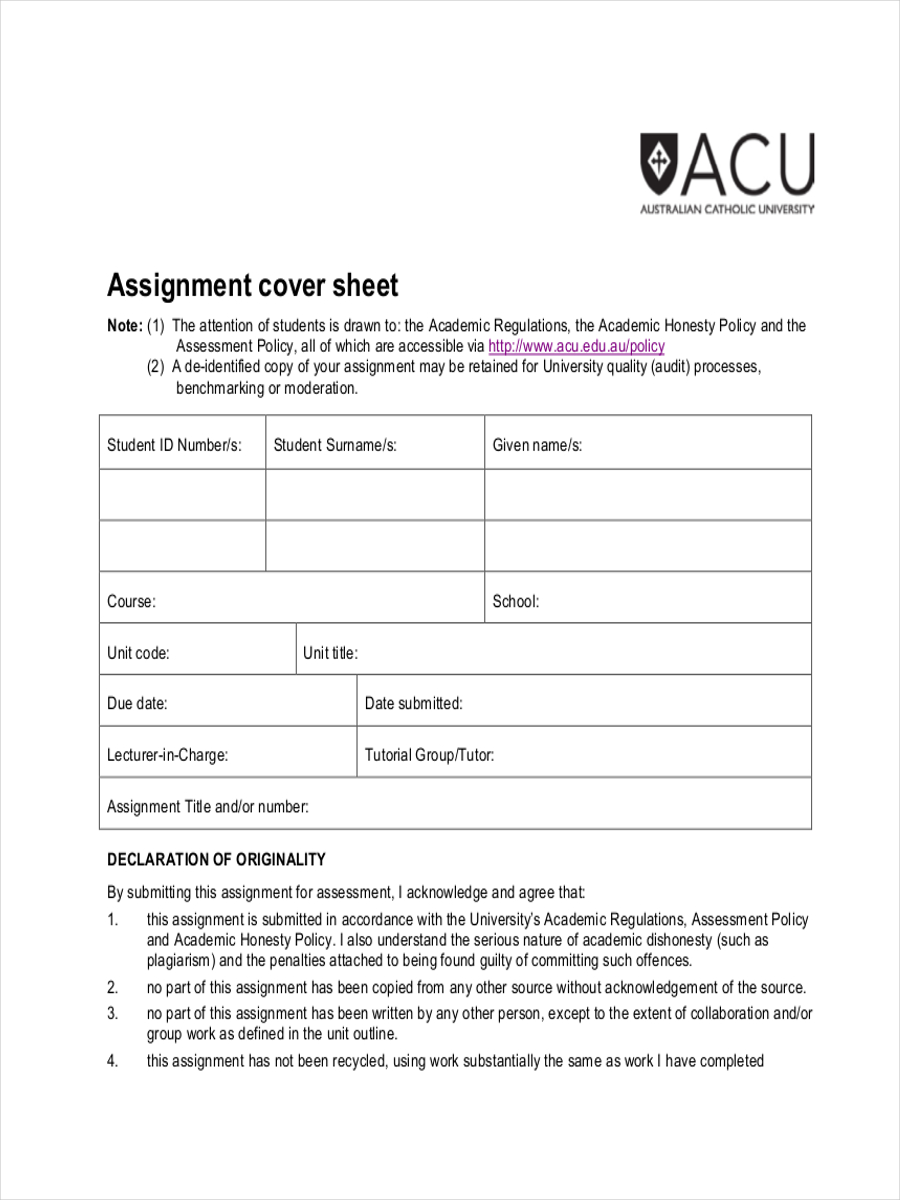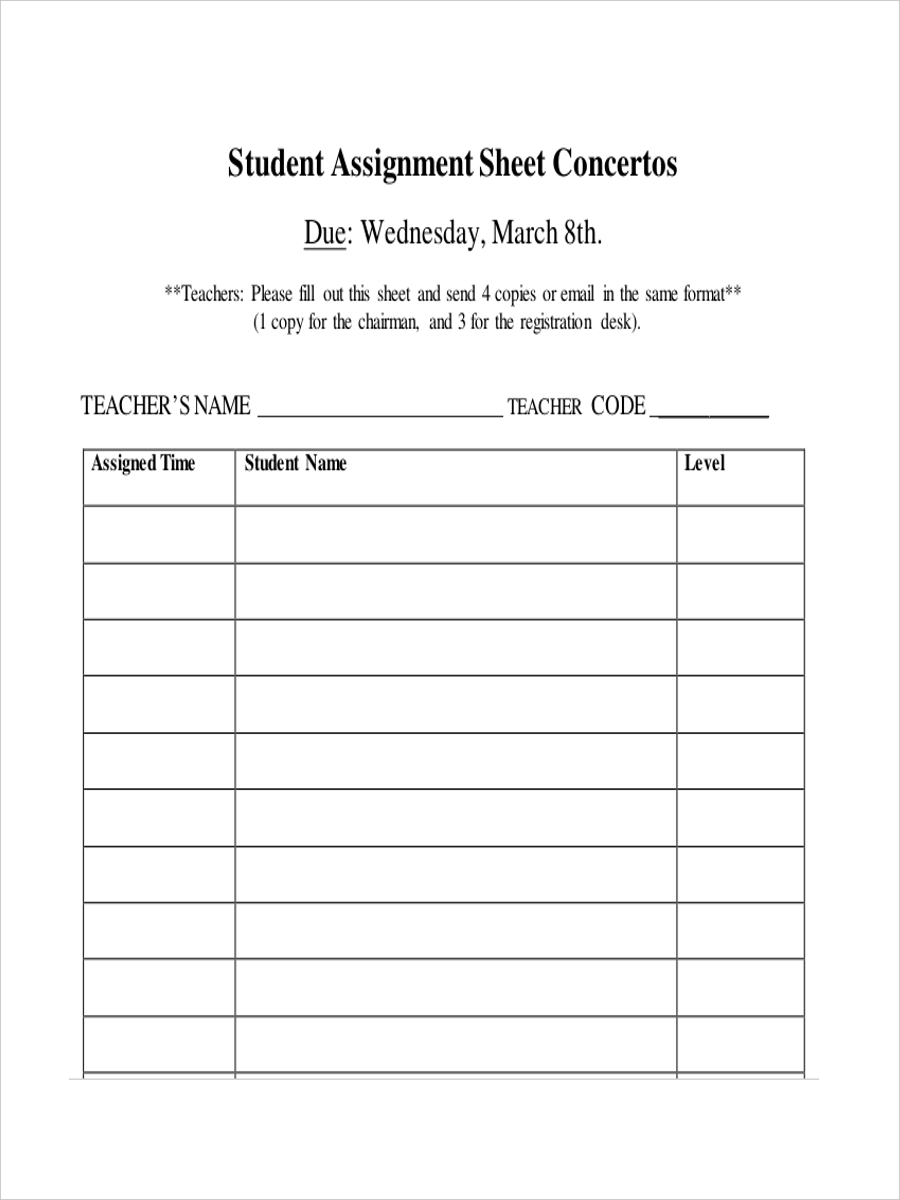- Mailing List
- Search Search
Username or Email Address
Remember Me


Resources for Teachers: Creating Writing Assignments
This page contains four specific areas:
Creating Effective Assignments
Checking the assignment, sequencing writing assignments, selecting an effective writing assignment format.
Research has shown that the more detailed a writing assignment is, the better the student papers are in response to that assignment. Instructors can often help students write more effective papers by giving students written instructions about that assignment. Explicit descriptions of assignments on the syllabus or on an “assignment sheet” tend to produce the best results. These instructions might make explicit the process or steps necessary to complete the assignment. Assignment sheets should detail:
- the kind of writing expected
- the scope of acceptable subject matter
- the length requirements
- formatting requirements
- documentation format
- the amount and type of research expected (if any)
- the writer’s role
- deadlines for the first draft and its revision
Providing questions or needed data in the assignment helps students get started. For instance, some questions can suggest a mode of organization to the students. Other questions might suggest a procedure to follow. The questions posed should require that students assert a thesis.
The following areas should help you create effective writing assignments.
Examining your goals for the assignment
- How exactly does this assignment fit with the objectives of your course?
- Should this assignment relate only to the class and the texts for the class, or should it also relate to the world beyond the classroom?
- What do you want the students to learn or experience from this writing assignment?
- Should this assignment be an individual or a collaborative effort?
- What do you want students to show you in this assignment? To demonstrate mastery of concepts or texts? To demonstrate logical and critical thinking? To develop an original idea? To learn and demonstrate the procedures, practices, and tools of your field of study?
Defining the writing task
- Is the assignment sequenced so that students: (1) write a draft, (2) receive feedback (from you, fellow students, or staff members at the Writing and Communication Center), and (3) then revise it? Such a procedure has been proven to accomplish at least two goals: it improves the student’s writing and it discourages plagiarism.
- Does the assignment include so many sub-questions that students will be confused about the major issue they should examine? Can you give more guidance about what the paper’s main focus should be? Can you reduce the number of sub-questions?
- What is the purpose of the assignment (e.g., review knowledge already learned, find additional information, synthesize research, examine a new hypothesis)? Making the purpose(s) of the assignment explicit helps students write the kind of paper you want.
- What is the required form (e.g., expository essay, lab report, memo, business report)?
- What mode is required for the assignment (e.g., description, narration, analysis, persuasion, a combination of two or more of these)?
Defining the audience for the paper
- Can you define a hypothetical audience to help students determine which concepts to define and explain? When students write only to the instructor, they may assume that little, if anything, requires explanation. Defining the whole class as the intended audience will clarify this issue for students.
- What is the probable attitude of the intended readers toward the topic itself? Toward the student writer’s thesis? Toward the student writer?
- What is the probable educational and economic background of the intended readers?
Defining the writer’s role
- Can you make explicit what persona you wish the students to assume? For example, a very effective role for student writers is that of a “professional in training” who uses the assumptions, the perspective, and the conceptual tools of the discipline.
Defining your evaluative criteria
1. If possible, explain the relative weight in grading assigned to the quality of writing and the assignment’s content:
- depth of coverage
- organization
- critical thinking
- original thinking
- use of research
- logical demonstration
- appropriate mode of structure and analysis (e.g., comparison, argument)
- correct use of sources
- grammar and mechanics
- professional tone
- correct use of course-specific concepts and terms.
Here’s a checklist for writing assignments:
- Have you used explicit command words in your instructions (e.g., “compare and contrast” and “explain” are more explicit than “explore” or “consider”)? The more explicit the command words, the better chance the students will write the type of paper you wish.
- Does the assignment suggest a topic, thesis, and format? Should it?
- Have you told students the kind of audience they are addressing — the level of knowledge they can assume the readers have and your particular preferences (e.g., “avoid slang, use the first-person sparingly”)?
- If the assignment has several stages of completion, have you made the various deadlines clear? Is your policy on due dates clear?
- Have you presented the assignment in a manageable form? For instance, a 5-page assignment sheet for a 1-page paper may overwhelm students. Similarly, a 1-sentence assignment for a 25-page paper may offer insufficient guidance.
There are several benefits of sequencing writing assignments:
- Sequencing provides a sense of coherence for the course.
- This approach helps students see progress and purpose in their work rather than seeing the writing assignments as separate exercises.
- It encourages complexity through sustained attention, revision, and consideration of multiple perspectives.
- If you have only one large paper due near the end of the course, you might create a sequence of smaller assignments leading up to and providing a foundation for that larger paper (e.g., proposal of the topic, an annotated bibliography, a progress report, a summary of the paper’s key argument, a first draft of the paper itself). This approach allows you to give students guidance and also discourages plagiarism.
- It mirrors the approach to written work in many professions.
The concept of sequencing writing assignments also allows for a wide range of options in creating the assignment. It is often beneficial to have students submit the components suggested below to your course’s STELLAR web site.
Use the writing process itself. In its simplest form, “sequencing an assignment” can mean establishing some sort of “official” check of the prewriting and drafting steps in the writing process. This step guarantees that students will not write the whole paper in one sitting and also gives students more time to let their ideas develop. This check might be something as informal as having students work on their prewriting or draft for a few minutes at the end of class. Or it might be something more formal such as collecting the prewriting and giving a few suggestions and comments.
Have students submit drafts. You might ask students to submit a first draft in order to receive your quick responses to its content, or have them submit written questions about the content and scope of their projects after they have completed their first draft.
Establish small groups. Set up small writing groups of three-five students from the class. Allow them to meet for a few minutes in class or have them arrange a meeting outside of class to comment constructively on each other’s drafts. The students do not need to be writing on the same topic.
Require consultations. Have students consult with someone in the Writing and Communication Center about their prewriting and/or drafts. The Center has yellow forms that we can give to students to inform you that such a visit was made.
Explore a subject in increasingly complex ways. A series of reading and writing assignments may be linked by the same subject matter or topic. Students encounter new perspectives and competing ideas with each new reading, and thus must evaluate and balance various views and adopt a position that considers the various points of view.
Change modes of discourse. In this approach, students’ assignments move from less complex to more complex modes of discourse (e.g., from expressive to analytic to argumentative; or from lab report to position paper to research article).
Change audiences. In this approach, students create drafts for different audiences, moving from personal to public (e.g., from self-reflection to an audience of peers to an audience of specialists). Each change would require different tasks and more extensive knowledge.
Change perspective through time. In this approach, students might write a statement of their understanding of a subject or issue at the beginning of a course and then return at the end of the semester to write an analysis of that original stance in the light of the experiences and knowledge gained in the course.
Use a natural sequence. A different approach to sequencing is to create a series of assignments culminating in a final writing project. In scientific and technical writing, for example, students could write a proposal requesting approval of a particular topic. The next assignment might be a progress report (or a series of progress reports), and the final assignment could be the report or document itself. For humanities and social science courses, students might write a proposal requesting approval of a particular topic, then hand in an annotated bibliography, and then a draft, and then the final version of the paper.
Have students submit sections. A variation of the previous approach is to have students submit various sections of their final document throughout the semester (e.g., their bibliography, review of the literature, methods section).
In addition to the standard essay and report formats, several other formats exist that might give students a different slant on the course material or allow them to use slightly different writing skills. Here are some suggestions:
Journals. Journals have become a popular format in recent years for courses that require some writing. In-class journal entries can spark discussions and reveal gaps in students’ understanding of the material. Having students write an in-class entry summarizing the material covered that day can aid the learning process and also reveal concepts that require more elaboration. Out-of-class entries involve short summaries or analyses of texts, or are a testing ground for ideas for student papers and reports. Although journals may seem to add a huge burden for instructors to correct, in fact many instructors either spot-check journals (looking at a few particular key entries) or grade them based on the number of entries completed. Journals are usually not graded for their prose style. STELLAR forums work well for out-of-class entries.
Letters. Students can define and defend a position on an issue in a letter written to someone in authority. They can also explain a concept or a process to someone in need of that particular information. They can write a letter to a friend explaining their concerns about an upcoming paper assignment or explaining their ideas for an upcoming paper assignment. If you wish to add a creative element to the writing assignment, you might have students adopt the persona of an important person discussed in your course (e.g., an historical figure) and write a letter explaining his/her actions, process, or theory to an interested person (e.g., “pretend that you are John Wilkes Booth and write a letter to the Congress justifying your assassination of Abraham Lincoln,” or “pretend you are Henry VIII writing to Thomas More explaining your break from the Catholic Church”).
Editorials . Students can define and defend a position on a controversial issue in the format of an editorial for the campus or local newspaper or for a national journal.
Cases . Students might create a case study particular to the course’s subject matter.
Position Papers . Students can define and defend a position, perhaps as a preliminary step in the creation of a formal research paper or essay.
Imitation of a Text . Students can create a new document “in the style of” a particular writer (e.g., “Create a government document the way Woody Allen might write it” or “Write your own ‘Modest Proposal’ about a modern issue”).
Instruction Manuals . Students write a step-by-step explanation of a process.
Dialogues . Students create a dialogue between two major figures studied in which they not only reveal those people’s theories or thoughts but also explore areas of possible disagreement (e.g., “Write a dialogue between Claude Monet and Jackson Pollock about the nature and uses of art”).
Collaborative projects . Students work together to create such works as reports, questions, and critiques.

Assignment Sheet
Ai generator.

One of the many sheet uses specifically directed toward academic purpose is the assignment sheet. Students are given assignments and have to submit a research regarding the topic given for assignment in an assignment sheet.
As with the balance sheet, assignment sheet examples in the page provide further information in the sheet uses and functions of an assignment sheet. Feel free to scroll down and get a closer look on the samples provided for in the page. The sheets in word are all available for download by clicking on the download link button below the sample. So stay awhile and have a good look around.
Assignment Sheet Example

- Google Docs
- Editable PDF
Size: A4, US
Assignment Cover Sheet Example

Size: 82 KB
Name Sheet for Assignment

Size: 159 KB
Repossession Assignment Sheet

Size: 260 KB

Sheet for Student Assignment

Size: 98 KB
Homework Assignment Sheet

Portfolio Assignment Sample Sheet

Size: 213 KB
What Is an Assignment Sheet?
An assignment sheet is a document written for the statement of purpose of delegating or appointing a task or research and discussion on a topic or purpose.
General sheet examples in doc provide further aid regarding an assignment sheet and how it is made. Just click on the download link button below the samples to access the files.
Reviewing an Assignment Sheet
In reviewing an assignment sheet, the following questions need to be asked or satisfied:
- What is it that the assignment is asking me to do?
- Are there clear instructions in completing the assignment?
- What needs to be done in order to be successful in the assignment?
- Are the due dates clearly stated and shown?
- Are the technical requirements stated clearly?
- Is there any resource or resources included?
- Is the assignment stated in a clear language?
- Is the tone appealing to students?
- Do I have clear understanding why the assignment is being done?
Day Shift Assignment Sheet Example

Size: 448 KB
Sheet for Multimedia Assignment

Size: 15 KB
Missing Assignment Sample Sheet

Size: 141 KB
Sheet for Faculty Assignment

Size: 232 KB
Sheet for Clinical Assignment

Video Assignment Sample Sheet

Size: 27 KB
How to Make an Effective Assignment Sheet, for Students
In creating an effective assignment sheet, the following have to be considered:
- Plan the task or purpose of the assignment. Ensure that the students understand critical tasks that need to be done which includes research, simple analysis , synthesis, and summary of the assignment.
- Schedule the whole process. Make a step by step instructions of what the project plan seeks to accomplish.
- Explain the requirements for the assignment.
- Decide on the due dates for the assignments. Include detailed instructions for important writing assignments.
- Include all important information that would make up a strong paper during submission. Help the students to understand the importance of sources. Discuss on formatting of the assignment and other suggestions in connection to the assignment.
- Include the grading criteria for your assignments.
Sample sheet templates and sheet examples in pdf are found in the page for your review. The examples further show how an assignment sheet is structured and the format it follows. To download an example, click on the download link button below the example.
Text prompt
- Instructive
- Professional
10 Examples of Public speaking
20 Examples of Gas lighting
